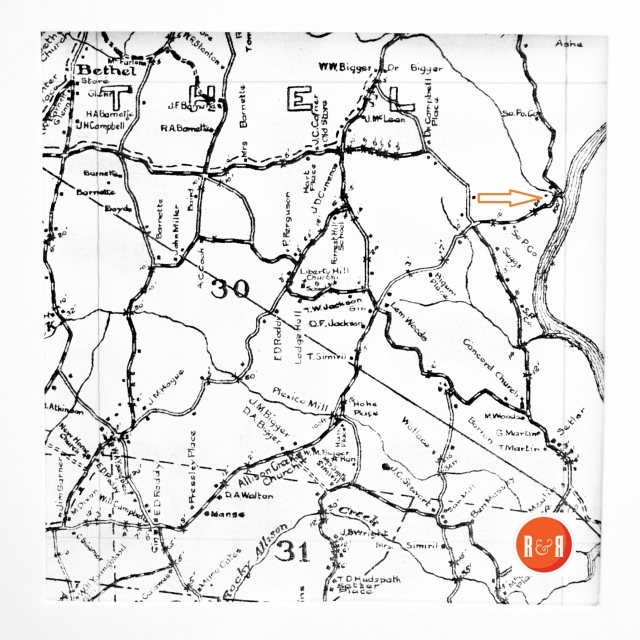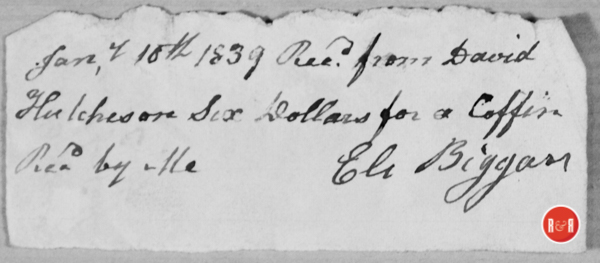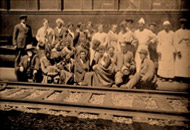City Directories and History: Historic Mason’s Ferry Crossing
The Yorkville Enquirer reported on May 23, 1878 – “The Post Master has ordered the establishment of a PO to be known as Catawba River PO, with Jasper S. Mason as Post Master. The office is on the horse route between Yorkville and Charlotte and about one mile west of Wright’s Ferry on the Catawba River.”
The Yorkville Enquirer reported on Sept. 18, 1879 in an ad stating, “J.N. Roberts has moved his meat market to the old Market House adjoining the office of Capt. T.S. Jefferys. He will furnish fresh meats on Tuesday, Thursday and Saturday. His meats will include beef and mutton.”
The Yorkville Enquirer on March 25, 1891 – “Mr. J.N. Roberts, the mail contractor between Yorkville and Charlotte, brings news that the residence of Mr. Isaac J. Costner, ferryman and Wrights Ferry on the Catawba River was destroyed by fire last week.”
The Yorkville Enquirer reported on May 30, 1903, Mr. G. L. Suggs of Enquirer was in York last week. Enquirer is at Wrights Ferry on the Catawba River.
“H. Harrison wrote a letter to the paper complaining that the stage road that stretched from Mason’s Ferry (present Buster Boyd Bridge) to Unionville, S.C., was in very bad condition. A stage coach route was the interstate of that day.” Bad Roads and Runaways, L. Pettus – Sept. 11, 2005
BIGGER’S-MASON’S-WRIGHT’S FERRY (ALSO BIGGAR’S FERRY)
An 1811 act of the S. C. legislature establishing “certain Roads, Bridges and Ferries” inducted the following: That the ferry on the Catawba river, in York district, commonly called Bigger’s Ferry, and lately, by law, vested in Dr. John Allison, be, and the same is hereby, re-established; and vested in James Mason, his heirs and assigns, for the term of fourteen years. And that the following rates of ferriage, and no more, be received at die same, to wit: for every foot passenger, four cents; for every led horse, four cents; for every rider and horse, six and a quarter cents; for every carriage with two wheels, horse and driver, twenty-five cents; for every four wheeled carriage, driver and horses, seventy-five cents; for every hogshead of tobacco, horse and driver, twenty-five cents; for every head of black cattle, sheep, goats or hogs, two cents.
In 1827, following the death of Daniel Mason, the ferry was vested in his widow, Nancy Mason: That Mason’s ferry over the Catawba river, be re-established, and vested in Nancy Mason, for the term of seven years, with the same rates of ferriage as heretofore, except that she be allowed the sum of twelve and a half cents for every man and horse. In 1841 the above ferry was re-chartered. Note that the road that led to and from the ferry is now called the “great road leading from Yorkville, South Carolina, to Charlotte, North Carolina.” In this century the “great road” received a number —Hwy. 49, a part of the national road network. That the charter of the ferry over the Catawba River, on the great road leading from Yorkville, South Carolina, to Charlotte, North Carolina, granted to James Mason and his heirs, be, and the same is hereby, renewed for the term of seven years, and vested in James L. Wright and William Wright, with the same rates of toll as regulated by the charter for said ferry, obtained from the North Carolina authorities. Sometime around the turn of the 20th century, perhaps as a result of the Great Flood of 1904, ferry service across the Catawba River was dropped at the site of Wright’s Ferry. Courtesy of the YCGHS, March 1994
LOUISE PETTUS WROTE: In 1778, Matthew Bigger was awarded a 14-year franchise on the Catawba River at the present location of Buster Boyd Bridge and Talbert (or Talbot) received the franchise for a ferry on the Broad River at the Pinckneyville Road crossing.
The state protected the customer by establishing the rules of operation and by setting the rates. The law said that two able-bodied men must keep the ferry night as well as day. If the ferry-operator did not give responsible service then he would forfeit the fare and would pay the delayed passenger 40 shillings for the first hour delayed and 20 shillings for each hour of delay thereafter.
Not everyone had to pay. The law made an exception for the heads of state, members of the general assembly, all ministers of the gospel, all people going to church, anyone going or returning from militia muster, troops of the Continental Army and all free Indians.
In 1778, Bigger’s Ferry and Talbert’s Ferry were allowed the same rate schedule. A foot passenger or one horse paid 1 shilling, 3 pence; a man and a horse (he had to dismount and hold the horse) were 2 shillings and 6 pence; a wagon and team was 20 shillings; black cattle, ferried or swam over were 1 shilling and 3 pence per head; and every head of sheep or hogs were 6 pence each.
The Yorkville Enquirer contained an ad on May 9, 1878 stating, “I have leased Wrights Ferry for a term of five years and have erected a wire rope, making the ferry the best and safest on the Catawba River. The rates are: .25 for wagons, .15 for horse and buggy, and half far for going to church on Sunday. Alex. S. Hand.”
In 1798, Matthew Bigger’s franchise was transferred to Dr. John Allison. By that time, the decimal system for money had been adopted. Allison’s Ferry charged 75 cents for a four wheel carriage with horse and riders. Cattle, sheep and hogs were 3 cents each.
In 1811, Allison’s Ferry became Mason’s Ferry, operated by James Mason and in 1827 the rights were transferred to Mason’s widow, Nancy Mason. The Bigger-Allison- Mason ferry was on a busy route. Road traffic from Columbia to Charlotte either came up through Chester and Yorkville by the Bigger-Allison-Mason route or came from Columbia through Camden and Lancaster to Charlotte. The Chester-Yorkville route was easier for wagons to negotiate. It is estimated that by the 1820s about 4,000 loaded wagons yearly went across the ferry at Mason’s Ferry. Courtesy of the YCGHS—June 1996
WRIGHT’S FERRY DEFIES COMPETITION I have leased Wright’s Ferry for a term of five years and have erected a wire rope to run the ferry boat for the safety of the public, making it the best ferry on the Catawba River, and I do not intend to be under ferried by little outside ferries after the 2nd of May 1878. All four horse wagons will cross at 25 cents a wagon; horse and buggies, 15 cents. Persons going to church Sundays, half fare; wagons detained over 30 minutes, except in high water, will cross free of charge, and I defy competition. For more favorable terms, address Southern Home (Charlotte, NC), May 10, 1878- ALEX S. HAND
(Information courtesy of and from: YCGHS – The Quarterly Magazine)
Stay Connected
Explore history, houses, and stories across S.C. Your membership provides you with updates on regional topics, information on historic research, preservation, and monthly feature articles. But remember R&R wants to hear from you and assist in preserving your own family genealogy and memorabilia.
Visit the Southern Queries – Forum to receive assistance in answering questions, discuss genealogy, and enjoy exploring preservation topics with other members. Also listed are several history and genealogical researchers for hire.
User comments welcome — post at the bottom of this page.
Please enjoy this structure and all those listed in Roots and Recall. But remember each is private property. So view them from a distance or from a public area such as the sidewalk or public road.
Do you have information to share and preserve? Family, school, church, or other older photos and stories are welcome. Send them digitally through the “Share Your Story” link, so they too might be posted on Roots and Recall.
Thanks!
User comments always welcome - please post at the bottom of this page.





Share Your Comments & Feedback: